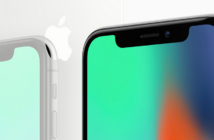By Jennifer Kyriakakis, founder and vice president of marketing at Matrixx
Many businesses will reach a critical point in their development where an upgrade to their business model is required in order to stay relevant to the market they serve. Telecoms is no exception.
Due to growing demands from consumers for a data-centric mobile phone experience driven by the rise of smartphones, the widespread adoption of over the top (OTT) applications and social media, the industry is coming to the realisation that a whole new business model is critical to survival and growth. As a result, communications service providers (CSPs) are plotting their course towards becoming digital service providers (DSPs), a necessary evolution if they are to stay ahead of the curve.
Evolution time
As this evolution occurs it raises the question of what exactly is a DSP and what makes them so different to regular CSPs?
The term DSP applies to any company that distributes media online. In the case of a CSP, in my opinion it’s an organisation that has moved on from offering core, traditional telecommunication services, to providing mobile broadband access, services, content and apps, all sold directly from the device as opposed to a physical retail store.
The transition from CSP to DSP has been accelerated as LTE services are rapidly being deployed, alongside existing 3G services. This has coincided with a shift away from traditional telecoms services – voice and SMS – to more digital, IP-intensive ones. This dynamic has caused many CSPs to reevaluate their role in the value chain and position themselves to take advantage of this situation.
Not a dumb pipe
The DSP isn’t merely a dumb pipe offering shared access to a common utility; it is an online, real time business that deals with countless transactions every day, managing high volumes of data traffic and multiple devices per user, and multiple users per account. The mobile landscape has changed dramatically and CSPs are fine tuning their businesses, and their network infrastructure, to cater for the digital needs of the data-hungry customer.
Currently, traditional CSPs do most of their business through traditional retail and call centre channels, whereas a DSP conducts more than 80% of their transactions through online digital channels, much like the Amazon’s or Internet-based brands of the world already do. There is also the speed at which new propositions and products can be rolled out that sets DSPs apart; they are more agile, development cycles are much shorter and cheaper, therefore all-round they tend to be far more profitable.
Part of this profitability comes from a new ability to personalise services and offers to customers, and adjust price plans as the relationship with the customer evolves, rather than taking a ‘one size fits all’ approach. In the near future, charging, policy and analytics will align so that DSPs can better control the entire customer lifecycle and charge customers granularly only for what they consume, and then upsell them with offers they like because they’re based on purchase history or any number of big data metrics.
Shedding costs
As they undertake the DSP journey, CSPs will be able to shed the costs of running traditional customer support operations because new IT systems will facilitate the transition to mobile self-care apps. These apps will allow consumers and enterprises to very quickly manage their accounts, make new service purchases, receive alerts about spending promotions, or account changes, and personalise and share their services with family or work groups.
In a fully connected mobile and digital world, consumers demand a multi-channel experience that is consistent across any device and network they are using, and this in turn has advanced and redefined the ‘traditional’ relationship between customer, brand and service. This paradigm shift has forced CSPs to reevaluate their position and transform their businesses into ones which can sell an array of interactive services and experiences in an instant.
CSPs can no longer rely on traditional business models, approaches or legacy IT systems. They need to analyse the new environment they inhabit, recognise the new challenges they face, acknowledge what is expected of them from customers, and embrace the fact that customers now drive the brand-consumer relationship, and plan a new strategy accordingly.
Ideological shift
This is an interesting time for the industry and we will see more and more CSPs make the leap from being network-centric organisations to becoming customer-centric businesses in the DSP mould. This is an ideological shift, a new phase of evolution that is being driven by innovations in IT, bolstered by new operational models such as cloud and virtualisation that are enabling CSPs to reduce costs, become more agile and adapt to changing market conditions.
Those CSPs that manage the transition successfully will be able to develop new and sustainable business models tailored to meet the customer’s requirements, those that do not risk extinction.
Matrixx Software delivers real time policy and charging solutions providing communications service providers instant visibility, intelligence and control.





